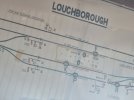Chiltern 165
Member
I cannot find anywhere how Semaphore boxes could view a Train Ready to Start message, if anyone knows or has a photo please let me know.
Im specifically looking for what the SR and BR(s) usedDepending on the era, it could have been an eyelet, banner-type or light indicator on the block shelf. There would often be a bell attached that would sound when the platform activated the TRTS.
Im specifically looking for what the SR and BR(s) used
Was it continuously lit or did it flash on and off slowly? I seem to remember a flashing indicator but can't remember off-hand what panel box I was in. Edit: I think it was WaterlooI know that early panel boxes had a small light on or adjacent to the appropriate platform that lit when the Ready to Start button was pushed.
Was it continuously lit or did it flash on and off slowly? I seem to remember a flashing indicator but can't remember off-hand what panel box I was in
Certainly when I was involved with IECC systems, which tended to imitate the more recent panel boxes as far as possible, the TRTS was a flashing white lamp. It was lit by a button on the platform and extinguished when the signal cleared. Earlier designs might have had a steady lamp, but that might have been difficult to see amongst all the other white lamps on the panel.Was it continuously lit or did it flash on and off slowly? I seem to remember a flashing indicator but can't remember off-hand what panel box I was in. Edit: I think it was Waterloo
The centre lamp on the point key switch and the white route lamps covering that point on the mimic diagram would flash when out of correspondence, which could be either detection lying the opposite way to how it was controlled, or no detection at all.My recollection is that the individual switches for points flashed when they were moving across or if there was a problem ‘out of correspondence’. Remember, I only cleaned the box: you can’t see much when scrubbing the floor.
Bognor Regis has these lamps built into the illuminated diagram (behind the buffer stops on each platform line).Im specifically looking for what the SR and BR(s) used

